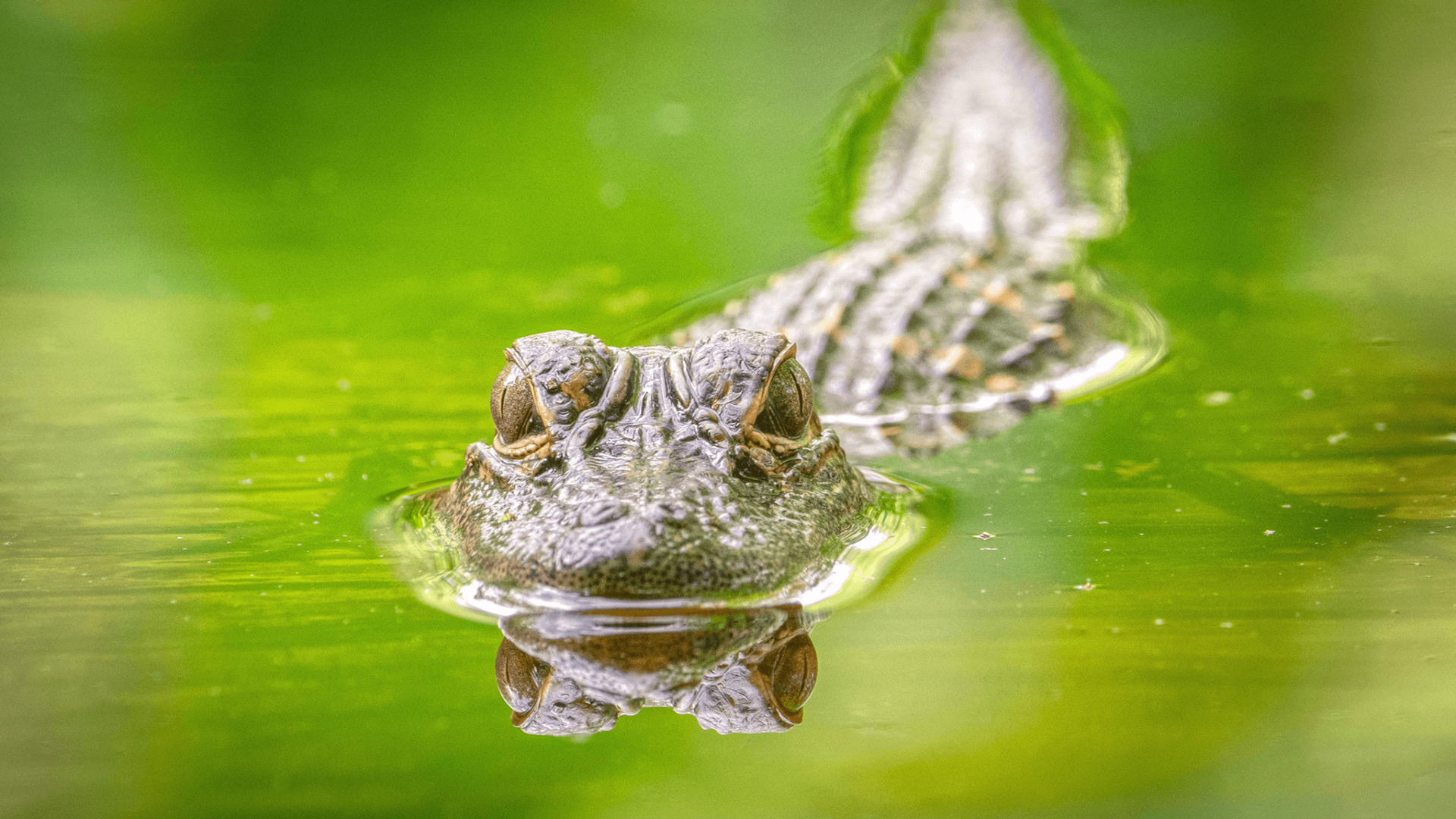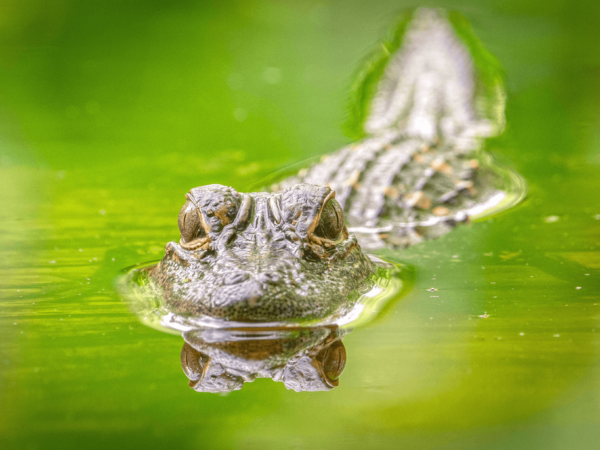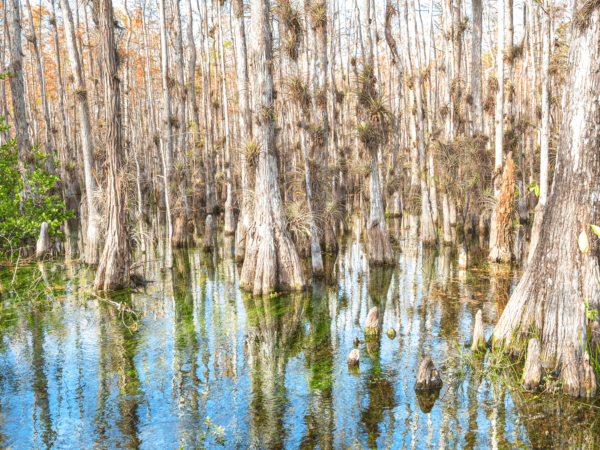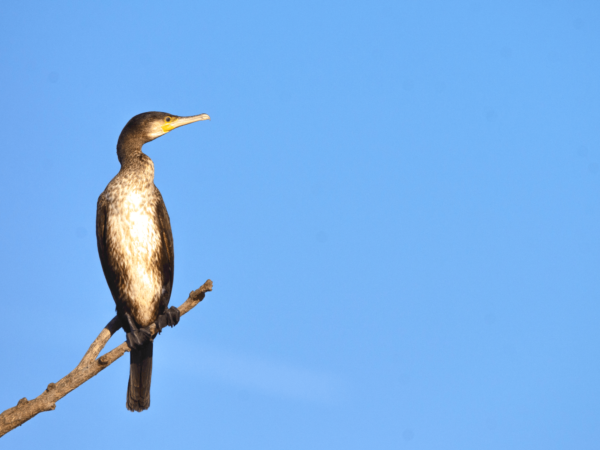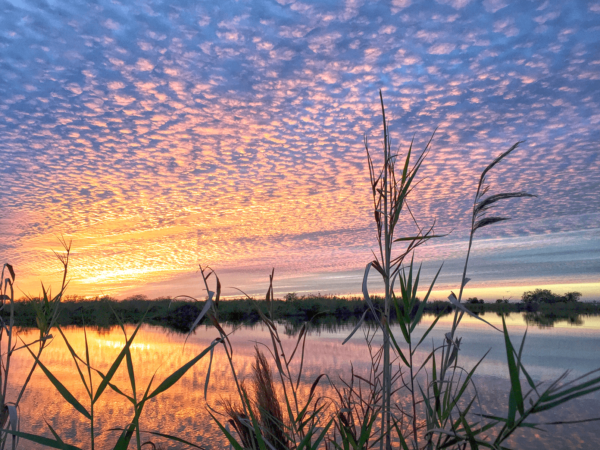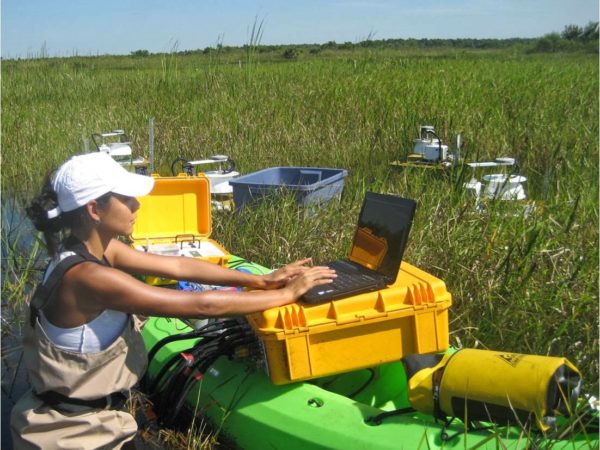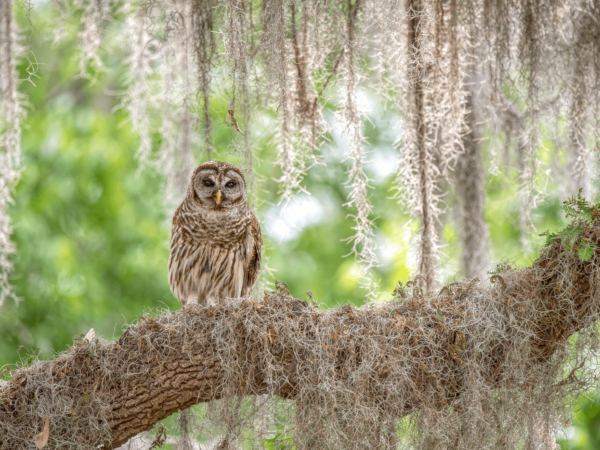One of the most beautiful, yet mysterious habitats of the Refuge is the Cypress Swamp. The majestic cypress trees, wavy ferns and thick Spanish Moss hanging down from the tall trees evoke images of what the swamp must have looked like when this cypress strand extended from Lake Okeechobee all the way to Ft. Lauderdale. Today, only this 400 acre remnant remains. It is primarily second growth forest; as most of the old growth cypress was harvested in the first half of the twentieth century.
The forested wetlands of the swamp are quite different from the open marshes of the Everglades. The cypress tree, which predominates, is the largest tree in North America east of the Rockies and is related to the huge sequoias and redwoods in California. The Seminole Indians made large 20 person canoes from these trees. Cypress wood was initially used for water pipes in the late 1700's in northern colonial cities. Those pipes were found to still be working when they were removed in 1914, so good was the longevity of the heartwood of these trees.
The Seminole Indians and earlier inhabitants of this area took full advantage of its rich stock of plants and animals. Just as the cypress are adapted to grow through differing hydro-periods; so too, did the Indians also learn to adapt to those same conditions. During periods of drought, when the water dropped and the swamp went dry; the animals would leave. The Indians lived off the native plants; including pond apple, coco plum and cabbage palm. These food sources remained predictable since these plants were adapted to low water conditions. When water levels were high, and mammals in the swamp were plentiful, deer, otter, bear and bobcat were hunted. In the marsh, where the Indians primarily lived, there were far more reptiles than mammals. Alligators and large fish could not maneuver in the dense cypress swamps.
Ferns grow in the wet, shady undergrowth of the cypress trees. There are at least seven different kinds of ferns in the cypress swamp. You can see the differing patterns of their reproductive spores on the underside of their leaves. Ferns are among the oldest plants on the planet, predating flowering plants by at least 30 million years. The giant leather fern is one of our tallest ferns. The resurrection ferns dry up without water but turn green and lush with rain. It’s speculated that a Resurrection fern could survive a hundred years without water, and still revive after a single soaking. A number of the native plants in the swamp were used by the Indians as medicine. This includes the Carolina Willow, nicknamed, “The Headache Plant,” for its components, salicylic acid, the basis of our modern day aspirin. A tea was brewed of the Spanish Needles, used for its anti-malarial properties. Wax myrtle, also known as southern bayberry, was used as an insect repellent. In addition candles were made from the wax in its berries. The cypress swamp is home to both our largest native woodpecker, the brilliant black, red and white Pileated Woodpecker and to a large owl called the Barred Owl. Both of these birds and the small screech owl, nest in our cypress swamp. It is also the home of numerous snakes and frogs. Among the more interesting features of the swamp are the “spots” visitors find on the trees. These “spots” are types of lichen, which are a combination of algae and fungus; neither plant nor animal. Lichens are often used as a measure of the health of a habitat. The plants that may garner the most interest in the swamp are the epyphites or “airplants.” These bromeliads, which belong to the same family of plants as the pineapple, gather water and nutrients from the air around them and do not harm the trees they grow on. The most striking may be the beautiful red and purple flowers of the cardinal wild pine. The most famous may be Spanish moss; neither moss nor Spanish, used as stuffing for bedding and for the first of Henry Ford's car seats. As you stroll along the boardwalk through the cypress swamp, enjoy the quiet and listen for the call of the birds and the pecking of the woodpeckers. Many of the animals of the swamp tend to hunt early in the morning; so you may only see evidence of wildlife; such as scratches on a tree where a bobcat has passed. Reflect on the diversity of the plants in the swamp and the beauty that these grand cypress trees can share with us.
There are many variations of passages of Lorem Ipsum available, but the majority have suffered alteration in some form, by injected humour, or randomised words which don’t look even slightly believable. If you are going to use a passage of Lorem Ipsum, you need to be sure there isn’t anything embarrassing hidden in the middle of text. All the Lorem Ipsum generators on the Internet tend to repeat predefined chunks.

